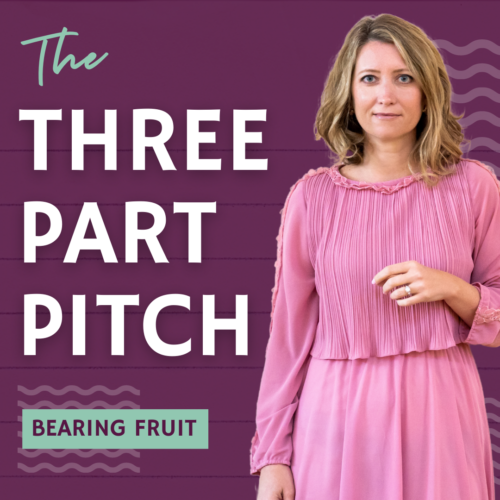The Three Part Pitch
Trish had been trying to land this dream client for over a year. In that time, she’d sat through many meetings, co-creating a scope and work plan. But, especially after a change in leadership, the group was adrift in thought and Trish was working without a contract.
Trish needed a three part pitch.
When you start to get the sense that you are being strung along – even unintentionally – take that as a sign that it’s time to propose a three part pitch.
When your clients can’t quite seem to crystallize their thinking, that’s your cue to write a three part pitch.
I’ve used this successfully in two different styles, so I’ll tell you about both. They have a common and important characteristic: The three part pitch is you taking control of the situation and suggesting a formal plan, in writing.
You bust this out when someone, anyone, but especially you pulls from your wisdom and experience to be a leader and set the ship on its course.
Pitch Choices
Choice A is the one the client thinks they want. You know what to write here because you’ve listened to them so much and those conversations include gentle (and not-so-gentle) suggestions for what they believe you should do to solve their problems. It’s usually incomplete or totally incorrect and you can say that, nicely, in your pitch.
Choice B is what you think they actually need, based on your previous work in similar situations and what you know, if anything, about their budget.
Choice C is what you would ideally do if money was no option. It’s more than they asked for and solves problems they didn’t even know they had. It’s a stretch. But it’s here to make Choice B look more reasonable.
Spend no more than 1 page writing up each choice.
Pitch Phases
Phase A is a first step on the project. Sometimes that involves just writing up the plan for the next phases. Sometimes it includes a formal assessment of the scope of the problem to be solved. Or a mini solution to a baby problem as a pilot to determine what to do next. It’s a small commitment to test the waters.
Phase B is an expansion of Phase A that is often to be determined.
Phase C is an even larger expansion of the above.
These often have time frames associated with them but costs may not be spelled out beyond Phase A because you don’t know what you’ll be getting into yet. But Phases B and C are in the proposal so your potential clients can see a road map without making a price- or scope-based commitment just yet.
I have used the phased approach when I’m not 100% sure the potential gig is actually viable, fun, or good for me. It gives me the option to back out if Phase A is a circus.
But it puts a future on paper so you have something to refer to later on when it’s time to talk next steps. It keeps folks from getting foggy again.
Trish went with the phase approach.
Why It Works
The pitch comes in three parts because people like options, but not too many. Too many options leads to analysis paralysis and that’s the LAST thing a group in this state needs, after they’ve already been in the fog for so long.
The pitch works because people need to see something in order to react to it. They need to see the shape of the idea (and the price tag associated with it) in order to make a decision, one way or another. Even if they reject all three parts, at least you got to an answer and can move on with your life.
The three parts of the pitch intentionally cover a range of commitment levels so that even if the group is only ready for a bite-size step, you can take it with them. Under contract. For pay.
The three part pitch puts you in a guiding, leadership role.
If you use one of these approaches, email me and let me know how it went.
Do you know someone who could use this advice? Send them this link to get on my newsletter list, too.

